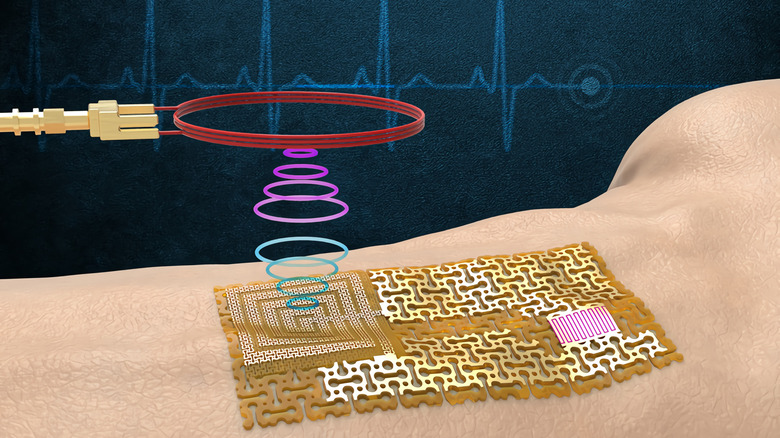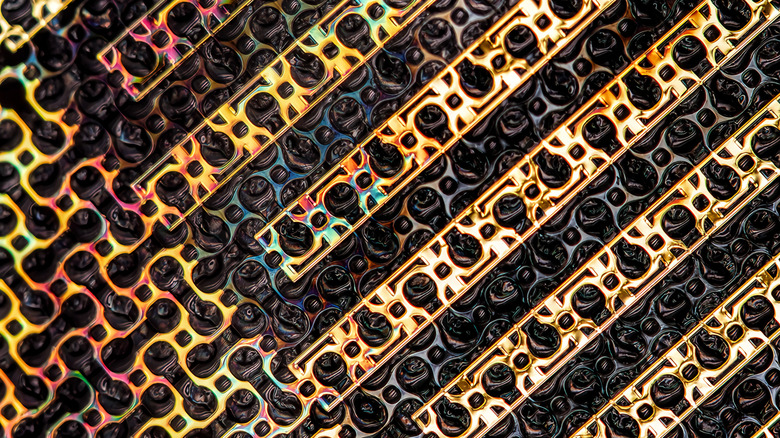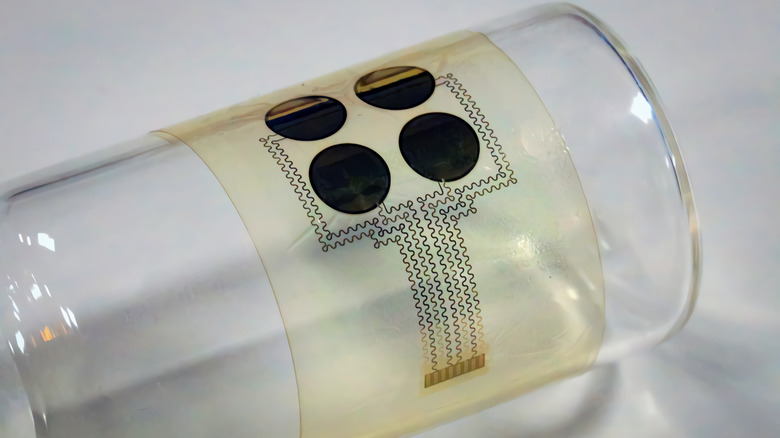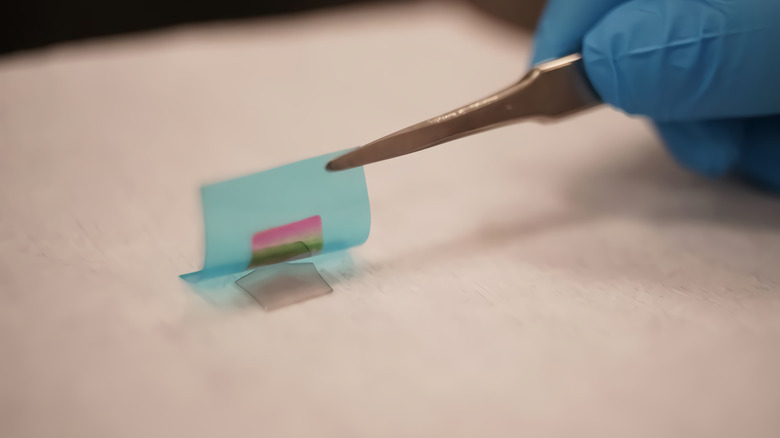This Electronic 'Skin' Lacking A Chip Could Be The Future Of Wearables
The experts over at the Massachusetts Institute of Technology have come up with a new type of wearable sensor that essentially doubles as an electronic skin. Now, the concept of flexible synthetic skin with embedded electronic circuitry is nothing new in the field of medical science. But what separates the latest innovation coming out of MIT is that the electronic skin doesn't need any dedicated sensor or chip array, nor does it need a Bluetooth module to communicate with a hub like smartphones for sending the health data.
The findings, which have been detailed in the journal Science, talk about a thin film that sticks to the body surface like a second skin. The film is made out of a compound called gallium nitride, which has piezoelectric properties. To put it simply, a piezoelectric material is a type of substance that produces an electric current when pressure is applied to it. Piezoelectric materials have a wide range of applications, from smartphones to ultrasound imaging in hospitals.
When applied on the skin, these two-way piezoelectric sensors can be used for detecting vital biomarkers and can also be deployed for sending out data packets without the need for dedicated wireless communication modules or a biosensing chip. The idea here is that the unique properties of gallium nitride can sense the pulse movement underneath the skin and convert it into electrical signals. Conversely, it can vibrate in response to an electrical impulse on the skin.
How it can change the game
The MIT team behind the electronic skin idea claims that a piezoelectric sensor array can be used for heartbeat analysis, assessing sweat metrics, and even sensing exposure to ultraviolet radiation. To determine the practical viability of the idea, the team took samples of gallium nitride and bonded them to a conducting layer of gold in order to boost the electrical signal yield. The team found that the piezoelectric array vibrated as a result of the pulse under the skin.
Moreover, the electric skin was also found to be sensitive to the salt concentration in a person's sweat. So far, there isn't a commercially available wearable device aimed at the masses that can perform a chemical analysis of sweat. Work is also currently underway on a non-invasive method of detecting blood sugar concentration, but so far, even tech giants like Apple and Samsung haven't been able to figure it out. MIT's novel approach to deploying piezoelectric materials can lead the way forward in many ways.
In comes the sensing part. The vibration of the piezoelectric material in response to the pulse movement creates an electrical signal that can be detected by a receiver nearby. In the future, that receiver device could very well be a smartphone or even the fitness band on your wrist. What's truly remarkable is that the electronic skin was able to collect data and then transmit it to a receiver without any dedicated chip or even a battery powering the whole assembly.
The future outlook
The team is proposing the idea that the vibrations produced across the piezoelectric material film can be used as an indicator of heart rate, especially when the pulse figures spike. And just like the change in heart rate, the gallium nitride film is also sensitive to changes in the chemistry of sweat and the level of skin exposure to ultraviolet rays.
What is truly remarkable is that the electronic skin created by the experts over at MIT has a thickness of only 250 nanometers, which is about 100 times thinner than the average human hair. During the test phase, these patches were applied to the wrist and neck area, and they were able to detect and send over the heartbeat changes wirelessly to a simple receiver nearby (per MIT).
In order to detect a change in the chemical composition of sweat, the electronic skin was slightly modified to add a layer of an ion-sensing membrane capable of attracting sodium ions. That way, a patch of the electronic skin is able to detect the changes in sodium levels in a person's sweat and transmit the data to a receiver device.
Regarding the potential applications, Jeehwan Kim from the Research Laboratory of Electronics noted that "You could put it on your body like a bandage, and paired with a wireless reader on your cellphone, you could wirelessly monitor your pulse, sweat, and other biological signals."
Higher versatility, fewer woes
But here's the exciting part: The electronic skin can also be easily customized with a different kind of ion-sensing membrane that is sensitive to other chemicals like glucose and cortisol in the sweat. "We showed sodium sensing, but if you change the sensing membrane, you could detect any target biomarker," adds co-author of the paper, Jun Min Suh.
In 2018, a team from Stanford University also came up with a wearable device that can measure cortisol levels in sweat and analyze stress levels. Additionally, 2021 wearable-centric research from the Ecole Polytechnique Fédérale de Lausanne in France revealed that cortisol can be used as a biomarker for treating conditions like burnout and obesity.
Another critical benefit is that the electronic skin is flexible, which means the comfort aspect has already been taken care of. That's a huge relief, as sleeping while wearing a smartwatch so that it collects detailed information about heart rate patterns is not the most comfortable experience. Plus, sleep tracking coupled with continuous heart rate monitoring is also quite taxing on the battery life of a smartwatch.
An electronic skin that can transmit data related to heart rate and changes in the chemistry of sweat without a chip or transmission gear is a truly remarkable step. Work in the domain has been making tremendous process. From the potential for tattoos that monitor health to artificial skin that can heal its own bruises, the possibilities are almost endless.



